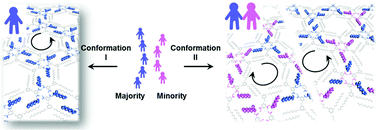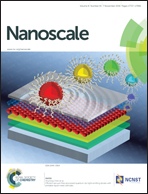Turning off the majority-rules effect in two-dimensional hierarchical chiral assembly by introducing a chiral mismatch†
Abstract
Understanding the mechanism in chiral transmission from a single molecule to a supramolecular level is fundamentally important to decipher the nonlinear amplification effect in the two-dimensional (2D) chiral assembly process. In this contribution, we report on the dramatically different nonlinear amplification effect in the chiral co-adsorber induced homochiral assemblies constructed by a series of homologous achiral building blocks on the graphite surface under control of the majority-rules principle. Homologous hexagonal networks are formed for 5-(benzyloxy)-isophthalic acid (BIC) derivatives with different alkyl lengths. While globally homochiral monolayers of BIC-C6 or BIC-C16 can be obtained by using a mixture of chiral co-adsorber 2-octanol with a small enantiomeric excess, such majority-rules principle based nonlinear chiral amplification is inoperative for the assembly of BIC-C10. Molecular mechanistic analysis indicates that BIC-C10 assembly can accommodate a chiral mismatched motif to form long-range ordered but short-range disordered crystalline networks, leading to the co-adsorption of enantiomers without enantioselectivity. The present results shed important insights into the significance of chirality mismatch during chiral transmission and benefit the understanding of chiral communication in a surface monolayer.


 Please wait while we load your content...
Please wait while we load your content...